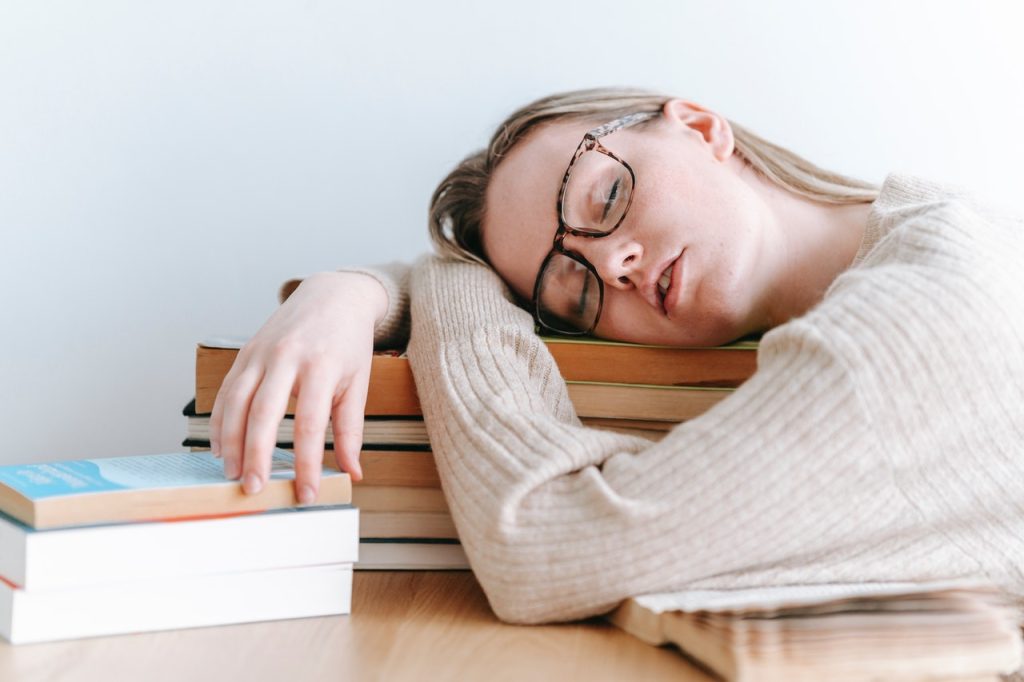
Young adults have an enormous balancing act daily. With school, homework, athletics, fine arts, extracurricular activities, and jobs, 24 hours doesn’t seem like a lot of time. Moving away from a pandemic, life has become extra complicated with adjustments back to routines in school and an influx of scheduling changes.
An active mind causes an inactive sleep pattern. And an inactive sleep pattern causes long nights of counting sheep. No wonder we are exhausted. According to the Sleep Foundation, “sleep is an active period in which a lot of important processing, restoration, and strengthening occurs.”
A new #MakeTime2Sleep campaign with the American Academy of Sleep Education (AASE) has created helpful tips and information relevant from infants to teens in making sleep a success for everyone. Check out their bedtime calculator as part of their resources.
Young Adults and Sleep
With 8 to 10 hours of sleep needed for a teen, studies show an average of 6.9 hours of sleep by the time they enter a senior year: a 1.5-hour decrease from sixth grade. This segment of the population equates to 69 percent of American teens sleeping less than 7 hours of sleep per night.
While the teen brain is in a stage of rapid development, a good night’s rest is critical. As children switch to their teenage years, studies have found a new phenomenon: sleep-phase delay. A teen’s circadian rhythm shifts to a later time creating their internal biological clock to delay. On average, the delay affects falling asleep two hours later than as a child.
The American Academy of Pediatrics published a new policy statement encouraging a high school start time after 8:30 a.m. across the United States. With so many factors affecting a teen’s sleep, preventing early start times when students are not able to actively engage in the classroom can help alleviate fatigue, behavioral issues, and anxiety.
Waking up earlier for school days builds daytime fatigue. Sleep pressure builds up as the week continues its pressures of work, social, and school pressures and commitments. Attempting to catch up on sleep during the weekends and breaks does not help the accumulated sleep loss during the week.
Anxiety-Free at Home
If you notice your teen is showing signs of sleep deprivation, irritability, and a change in attitude, work together on establishing a bedtime routine. Don’t just ask your teen to consider the tips to sleep well but practice what you teach. Hopefully, a combination of these tips will help your teen reduce levels of anxiety, function more optimally at school, and avoid sleeping in the afternoon lack of sleep the previous night.
- Be available. Talk to your kids one-on-one so they know you are listening. Keep the time focused without the disturbance of a cell phone or television. Maybe the best place is to talk outside the house. But wherever you talk, make sure they know you are their number one fan.
- Avoid caffeine. If the routine is working, consider the elimination of caffeine before dinner. Cutting out all caffeine 3 hours before bedtime, it will limit bathroom trips and limit the mind being stimulated.
- Add oils. For some kids, the ambiance of a room is just as important as the routine. Consider trying lavender diffusers or pillow mist. Both will create a relaxing atmosphere in their bedroom.
- Bedtime routines. Each member of the family is different, but turning off electronics 30 minutes prior to bedtime and a warm bath or shower is a good start. Assess if you need to read a book before bedtime or add a few minutes of open talking.
- Cool temps. Keeping their bedroom cooler helps aid the rem cycle and speed up the process of falling asleep. According to the National Sleep Foundation, your body temperature decreases to initiate sleep. By keeping your room in the 60s, you increase the process. The rem cycle is more consistent versus hotter temperatures which can decrease scary dreams for little ones.
If the tips and routines have not helped, someone in your family might be suffering from a sleep disorder. It can start at any age and our professionals can help to start with a free consultation.







